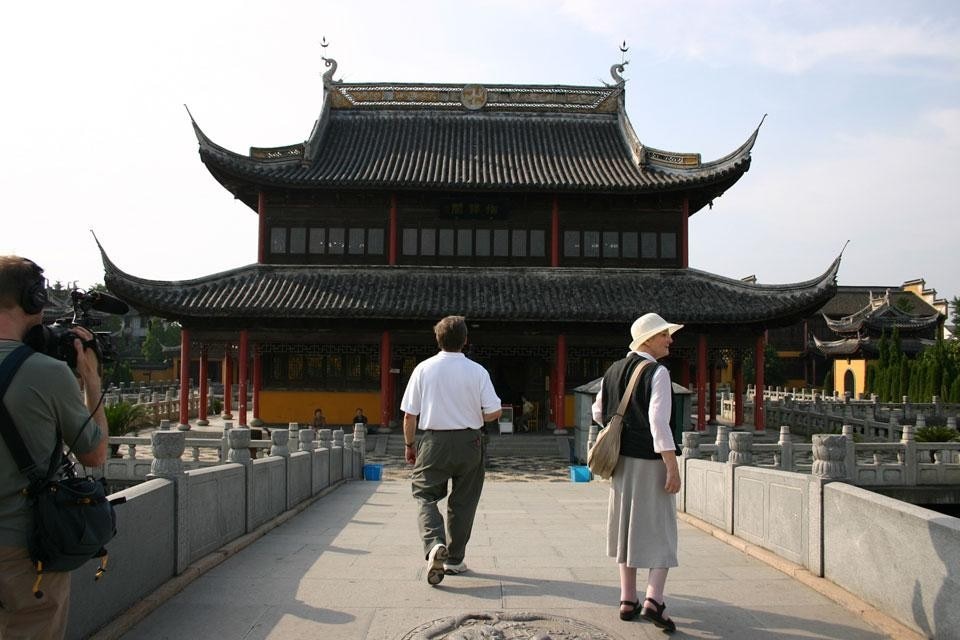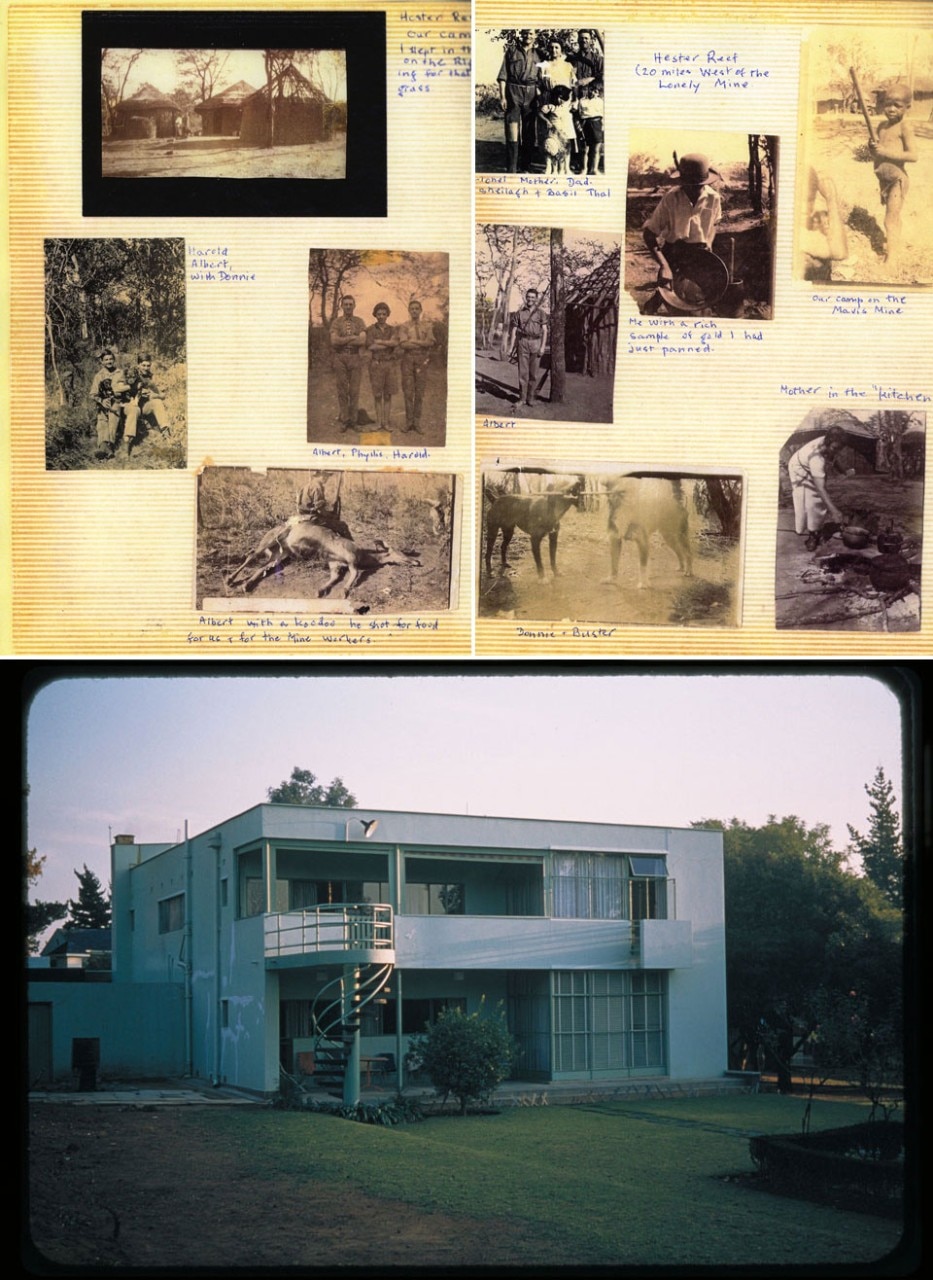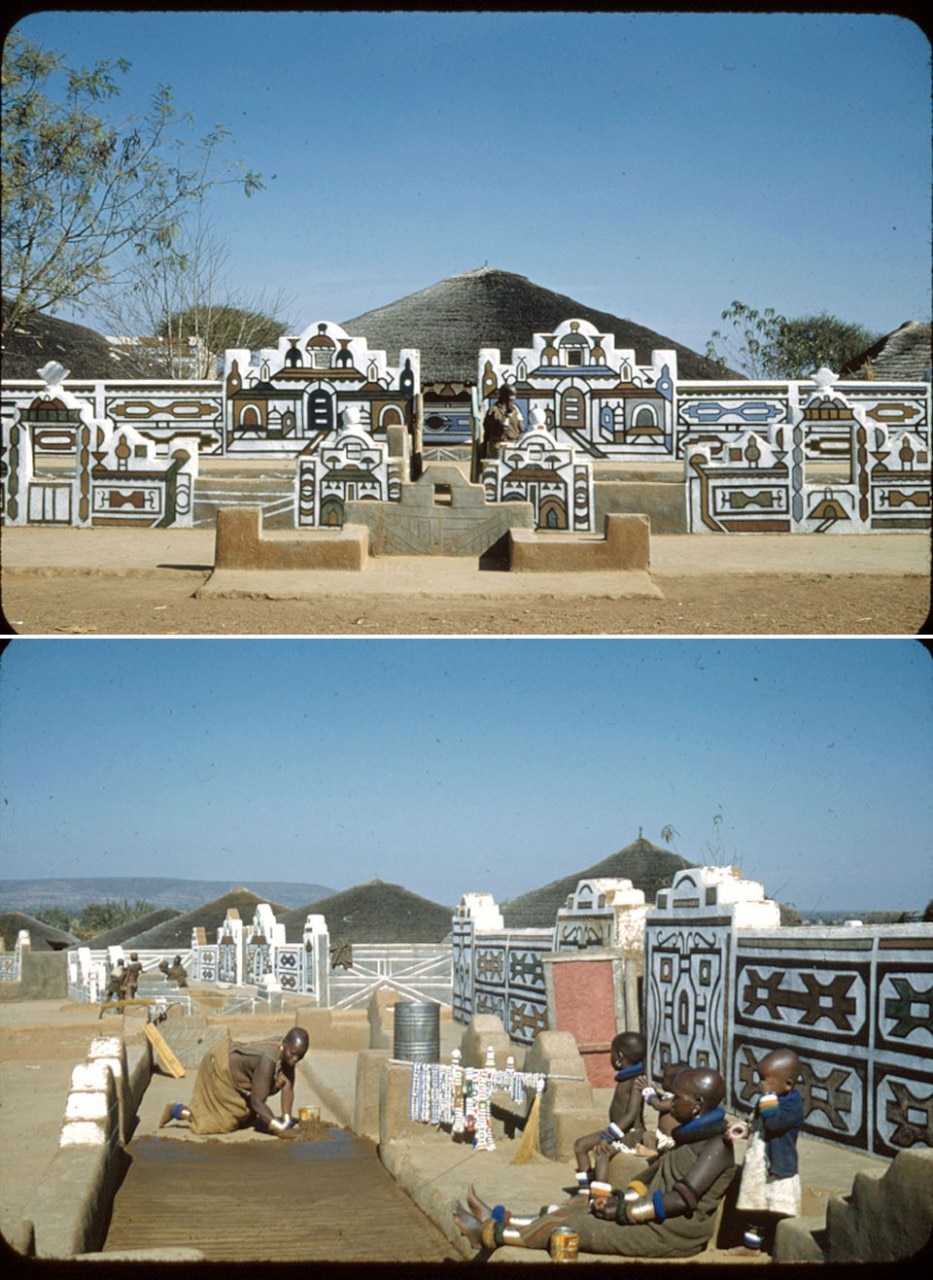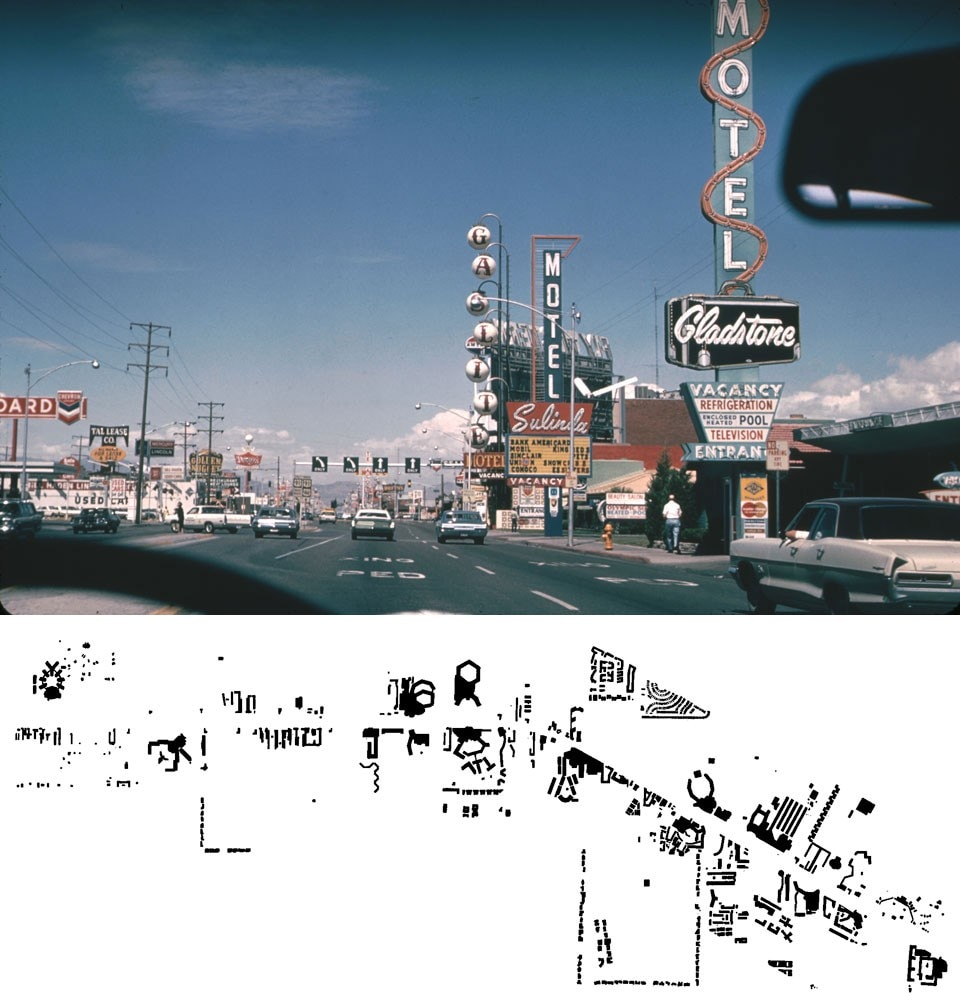Denise describes how growing-up in South Africa predisposed her to take an "African view of Las Vegas" and how study on three continents took her into urbanism and led her with, Robert Venturi, from Rome to Las Vegas and back to Rome, in search of an iconographic architecture of communication and an understanding of the automobile city. In the 1990s and 2000s when work brought them to Asia, Robert and Denise turned their research to Japanese and Chinese cities. Here she discusses their work in China and what they learned there, setting it within the context of their wider thought and lives.
—For Professor Luo Xiaowei, for years of friendship and with love and respect
Brendan McGetrick: In the past, you've spoken and written about your experiences growing up in Johannesburg in the 1940s, when the city was a work center for Africans from across the continent as well as a refuge from Nazism for Europeans, especially Jews. To begin, could you describe this scene?
Denise Scott Brown: The largest migrations were of Africans southward, seeking work particularly on the mines and Africans formed by far the majority of the population of the country. However apartheid was rigidly enforced and social lives were conducted, voluntarily or involuntarily, within not between groups. Europeans of mainly Dutch and English descent arrived in South Africa in waves from the 17th century, and under their hegemony Afrikaans and English became the official languages of the country. Patterns of 19th and early 20th century migrations from Europe resembled those to America. My grandparents, for example, moved from Lithuania and Latvia to Southern Africa while their siblings chose the US and UK, and I was born in Northern Rhodesia, now Zambia. These histories were background to my story but they became central when my grandmother arrived to live with us in 1940. Having spent years in the Rhodesian wilderness, she was an elegant British colonial lady, but also very much a Central European and, like all our family, profoundly Jewish. Her sweep of experience became my "memory beneath memory."

This multicultural population surrounded me at school and home, but Africans lived in our home as domestic servants. The clash of races during apartheid was a political reality that imprisoned the whole society, leaving many grievously harmed and all tarnished, but it had another side — an artistic culture, whose liveliness was induced by two schisms: the first the color line but the second a clash between Europe (mainly England and later the US) and Africa. Together these have given me what I call my "African view of Las Vegas" and constitute the major African input to my creativity. To show how this came about I must start with my early life. [1]
As a child, the books I read at home and school came largely from England. So did my teachers. Under their influence, my hand-made Christmas cards showed snow scenes in Surrey — during the African summer! But my Dutch Jewish art teacher said, "You really won't be creative unless you paint what's around you." For her, this meant the picturesque African flower sellers outside the Johannesburg city hall but later I discovered aspects of African life more relevant to me. Nevertheless, the first Africa-around-us influences came from her. And from my mother. Her childhood and youth were spent in the Rhodesian wilderness, and its sepia photographs still lined the walls of her apartment, when she died at 97 in Geneva. She had a life long romance with the wilderness and the tribal Africans she and her family lived amongst, whose houses of mud and twigs in her photographs resembled those I studied and built models of with our Canadian elementary school teacher in 1939. My mother's other passion was architecture. She had studied it at the University of Witwatersrand but had dropped out when money ran out. But while there she had joined some students in an early turn toward Modernism. A letter to those students from Le Corbusier in the middle '30s asks, "Could you find a Croesus in Johannesburg to bring me there so we can work together?" In 1933 my mother approached these architects to design our family home. So I grew up in an International Style house with a mother eager to explain her love of early Modernism.

Yes, and from it grew my understanding of a two-culture clash — not C.P. Snow's between arts and sciences, nor the outrages of apartheid, but that between the polite, England-dominated views of what art, landscape and culture should be and those derived from what was actually around us, in my case the veld, Johannesburg, and African cultures as they hit the city. I learned later in planning school to interpret this divergence as one between "is" and "ought" and to see it as a major theme in America too. So Learning from Las Vegas (my part at least) started in Africa. And if you read art magazines from southern Africa today you will see the debate continuing as artists ask: How can our work be African, not dominated by Europe or America but by our own experience?
Could you define this concept of "is and ought," which seems to be crucial to what you're saying and applicable in many places?
I put quotes around them to make them more understandable. The "is" are the cultural patterns, including landscapes, that you perceive in the place where you are or where you grew up. For artists, their childhood is important to their creativity, and what was around them when they stood two feet above the ground seems to have something to do with it. But growing up in a place far from your cultural "roots" — the settler's experience, the American experience — can influence you too. Some Texans put it this way: "The two coasts dominate American culture but here we have longhorns." This is a world-wide problem but it was extreme in South Africa of the 1940s, where we were cut off from each other locally by race prejudice and from the world by war and geography. Johannesburg, like China, is still very far away — fourteen hours from New York by plane — and the lively contacts of my childhood decreased when the war ended and people returned to their homes overseas or made for the US, and when high school then architecture took over in my life.
In the same way I found South Africa's urban industrial folk-pop art an exciting "is" and the highveld landscape more beautiful than the lawns of Surrey. They and early Modern architecture were my background
1.jpg.foto.rmedium.jpg)
In old age I realized that my early experience on three continents formed a more coherent sequence than I had thought when young and that, had I continued in South Africa, I would have probably found the intellectual excitement I needed there. But we students of architecture in particular felt cut off. Our professors taught that we must travel to Europe to see firsthand the historical buildings we had studied, that we needed this basic experience to understand the origins of our culture and even of the environment around us. And I agreed. But I was already developing my own notion of the "is" — that it was not to be seen as merely an adapted version of Europe, that it had its own dimensions and standards. In four years of study and work in England and Europe, I learned to respect the indigenous and everyday, and even to enjoy the "impolite" cultures of a mass society. So home from Europe and intending to leave for America, Robert Scott Brown and I turned to the emerging folk-pop art of Africans in the Johannesburg industrial outskirts.
Artist of all races learned from Africa. European refugees produced a lively response to its arts and landscapes. Painters like Erma Stern applied their aesthetic enjoyment and European painting styles to African rural life. Their art is beautiful, historical now, and a fascinating footnote on the history of European art and migration, but it was not, I felt, as vital as the artistic response of Africans to the detritus of industrial culture at the outskirts of cities where they lived. [2]
1.jpg.foto.rmedium.jpg)
Another example is the Mapoch. When apartheid forced their biggest village to relocate to land outside Pretoria, they rebuilt their mud houses with grass roofs and hand-painted exterior decoration in a long line. This highly architectural rural village cleverly included urban themes. Before all houses were forecourts defined by walls of sun-baked brick whose ornamental entryways were decorated with pictures of white people's suburban houses. On the inside of one house I saw a line drawing of a bicycle with every spoke of each wheel depicted. Bicycles are highly prized in African life and part of the "is" that I found so fascinating. Later, the signs in Las Vegas became interesting in a similar way, and even later, the signs (and bicycles) of China.

Maybe there was an element of aspiration, but I took it as a wide-eyed African response to Western culture. The artists were adapting their traditional patterns on walls and beadwork by adding items from their present experience. In about 1956 I saw another example by a Zimbabwean artist carved in the light wood used for tourist art. Usually these are of people, animals and traditional objects, but this was an interpretation of Bulawayo city. Its high rise buildings looked like Daniel Libeskind designs, and in front was a train station, a low building with a corrugated roof and a sign saying Bulawayo 1934. This offering to tourists was an African artist's reaction to the Western urbanism around him.
You mentioned earlier that the African folk artists' interpretations of Western artifacts were usually more interesting than the Western artists' response to African culture. The same argument could be made for the ongoing clash between Chinese and Western visual culture. Why do you think this is?
The African adaptive art had a somewhat different meaning for me. First, I liked its energy, the vigor of people facing something totally different from their own experience, of artists turning difficulties in their lives to beauty. Their art carried a lesson like that the sculptor Henry Moore learned when young in the art of primitive tribes. He and other modernists called these and some natural phenomena — pebbles, driftwood — "found objects," and the African works were found objects for me. But whereas modern artists used the influence of folk art straight and those in Africa merely added African subjects to their still lives and landscapes, I was in tune with a parallel but also divergent movement in Modern architecture, The young Le Corbusier and his friends moved away from the arts of the Pacific and sought found objects in industry across the tracks of Northern European and American cities. Castigating "eyes which do not see," Corbu studied the architecture of liners and American grain elevators as examples of a downright approach to design, in line with post World War l needs.
In the same way I found South Africa's urban industrial folk-pop art an exciting "is" and the highveld landscape more beautiful than the lawns of Surrey. They and early Modern architecture were my background. But by the time I moved to England I was already beginning to say, As much as the industrial, there is the commercial. This was long before I came to America and discovered the Las Vegas Strip, grandfather of all found objects.
This interview continues next week in part two of four.

1. Architecture as Signs and Systems for a Mannerist Time, Belknap Press of Harvard University Press, 2004, pp. 105-119
2. "The art in waste", in Distorsiones urbanas / Urban Distorisions, Madrid, Basurama, 2006
3. Shack Chic: Art and Innovation In South African Shack-Lands, Quivertree Publications, 2003

1.jpg.foto.rmedium.jpg)